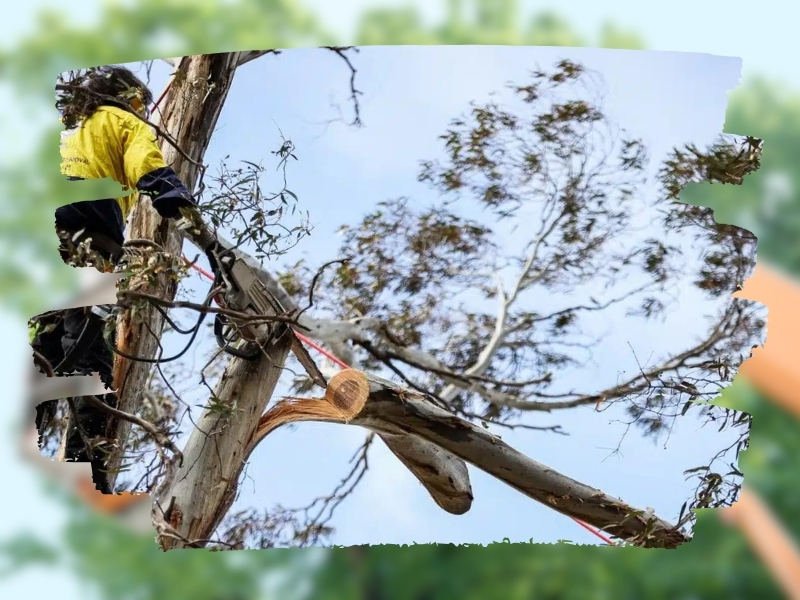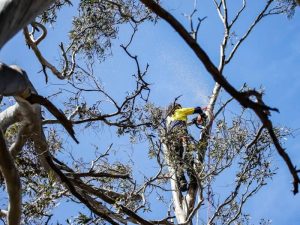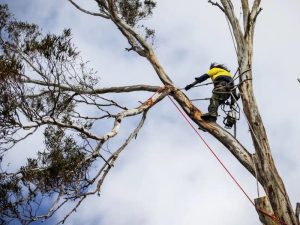Fruit trees are a rewarding addition to any garden, providing beauty and a bountiful harvest. However, maintaining their health and ensuring they produce fruit to their full potential requires regular trimming. Timing is crucial in how effective the trimming will be, particularly in Melbourne’s temperate climate. Knowing the right season and how to care for your fruit trees through trimming is essential for a thriving garden. This article explores the ideal time to trim fruit trees, why timing is vital, and what tools you’ll need to do the job efficiently.
Why is timing important when trimming fruit trees?
Timing is vital when trimming fruit trees for several reasons. Each cut affects the tree’s growth, health, and fruit production. Understanding when to trim can maximise the benefits and reduce the risks of improper timing.
- Health: Trimming at the wrong time can leave trees vulnerable to diseases and pests. In particular, open wounds from trimming during wet periods can attract harmful organisms.
- Growth Management: Proper trimming ensures trees grow in a manageable shape, with strong branches capable of supporting fruit.
- Fruit Production: Trimming encourages the growth of new branches that will bear fruit. Trimming too late or too early can hinder this natural cycle.
- Flowering Cycles: Trimming at the right time aligns with the tree’s flowering and fruiting cycles, ensuring that energy is focused on fruit development.
- Climate Considerations: Melbourne’s unique seasonal changes mean you need to know the right conditions for each type of fruit tree. Temperature and rainfall can influence trimming effectiveness.
Understanding local council tree regulations is essential for knowing the best time to trim your fruit trees.
What are the best seasons to trim different types of fruit trees?
Different fruit trees require trimming at varying times of the year to align with their growth and fruiting cycles. Understanding the right season for each type of tree ensures optimal health and productivity.
- Stone Fruits (Peaches, Nectarines, Apricots): These trees are best trimmed in late summer after harvesting. This allows the tree to heal before winter, preventing infection risks from wet conditions.
- Apple and Pear Trees: The ideal time to trim these trees is late winter, just before new growth begins in spring. This encourages vigorous growth and more significant fruit production.
- Citrus Trees: These trees are typically trimmed in early spring, as they can tolerate Melbourne’s mild climate. This allows new growth to flourish during warmer months.
- Cherry Trees: Trimming should be done in late summer to reduce disease risk and help maintain a manageable shape.
- Fig Trees: They are best trimmed in late winter, when the tree is dormant, allowing it to focus energy on fruit production in the coming months.
How can you identify the right time for trimming fruit trees?
Every fruit tree has its growth cycle, and observing these patterns is crucial in determining the best time to trim. Here are a few tips for identifying the right time:
- Look at Bud Development: For the best results, trees should be trimmed before new buds break open in spring, as this ensures the energy is directed towards new growth and fruit production.
- Assess Branch Health: Trim any dead or diseased branches as soon as you spot them, no matter the season.
- End of Fruiting: Most trees benefit from post-harvest trimming, allowing them to conserve energy before going dormant for winter.
Should you trim fruit trees during winter or summer?
Both winter and summer are essential times for trimming fruit trees, but they serve different purposes depending on the tree’s specific needs and the desired outcome.
Winter trimming (Late June to Late August):
- Ideal for: Most deciduous fruit trees, such as apples, pears, plums, cherries, peaches, and nectarines.
- Benefits:
- It shapes the tree and promotes a healthy structure.
- Removes dead or diseased wood.
- Encourages new growth and increased fruit production.
- Minimises stress on the tree as it’s dormant.
Summer trimming (December to February):
- Ideal for: Stone fruits (peaches, nectarines, plums, cherries) and citrus trees.
- Benefits:
- Controls size and shape.
- Removes suckers, crossing branches, or excessive growth.
- Thins out fruit for improved quality.
- It can be used to address specific problems or goals.
Note: While these are general guidelines, the best timing for trimming fruit trees can vary depending on the tree’s age, health, and the gardener’s specific goals. It’s always recommended to consult with a local horticultural expert or gardening centre for personalised advice.
How does trimming affect fruit production?
Trimming directly impacts the quality and quantity of the fruit your trees produce. Here’s how:
- New Growth: Proper trimming encourages the growth of new branches, which are essential for fruit production. Fruit typically grows on new wood.
- Air Circulation and Sunlight: Trimming opens up the canopy, allowing better air circulation and sunlight penetration, which leads to healthier fruit development and reduces the risk of disease.
- Energy Focus: Removing non-productive branches ensures the tree’s energy is directed towards fruit-bearing branches, resulting in better-quality fruit.
What tools do you need to trim fruit trees efficiently?
Having the right tools is crucial for effective tree trimming. Here are some essential tools you’ll need:
- Secateurs: Hand-held trimmers for small branches and shoots.
- Loppers: Larger, long-handled trimmers for thicker branches.
- Pruning Saw: A specialised saw for cutting through thick branches and limbs.
- Ladder: A sturdy ladder for reaching higher branches safely.
- Disinfectant: A mild disinfectant (e.g., rubbing alcohol or a commercial tree disinfectant) to clean tools between cuts, especially when dealing with diseased branches.
- Safety Glasses: Protective eyewear to shield your eyes from flying debris.
- Gloves: Sturdy gardening gloves to protect your hands from thorns and sap.
What are common mistakes to avoid when trimming fruit trees?
Even with the best intentions, mistakes can happen when trimming fruit trees. Avoid these common pitfalls:
- Over-trimming: Removing too much foliage can stress the tree and reduce its ability to produce fruit.
- Cutting Too Close: Avoid cutting too close to the trunk or main branches, as this can damage the tree and hinder proper healing.
- Not Disinfecting Tools: Always clean and disinfect your tools between uses to prevent the spread of disease.
- Ignoring Branch Angles: When trimming, consider the angle of the branches. Sharp angles can lead to weak growth that is prone to breaking.
Consult with tree trimming experts for advice on when to trim your fruit trees and how to do it effectively.
Maximise your fruit yield!
Maintaining your fruit trees doesn’t have to be a difficult task. With the help of The Yard, you can ensure that your trees are trimmed at the right time and with expert care. Whether you’re in the inner metro areas of Melbourne or the outer suburbs, we offer comprehensive tree services, including trimming, trimming, and stump grinding. Their team of qualified arborists will ensure your fruit trees stay healthy and productive, all while adhering to local council regulations. Don’t wait until it’s too late—reach out to The Yard today for professional advice and tree trimming services.




